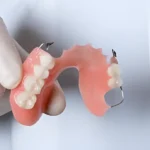When many business owners think about the value of their business, they often think in terms of their profit margin or their revenue stream. Some owners may also include things like accounts receivable. In many ways, those things do represent the practical value of the business on a day-to-day basis.
For an overall business valuation, though, at least one valuation method focuses on your assets, both tangible and intangible assets. Feeling a little hazy on exactly what physicals assets are or how you use them? Keep reading for our quick guide to tangible assets.
What Is a Physical Asset?
When you think of physical assets, think in terms of material objects. So, let’s say you own the building that your business operates from. That building is a physical asset of the business.
Other common types of tangible assets include your inventory and any equipment your business owns. For example, all of the cash registers, computers, tools, and even forklifts that the business owns are considered physical assets.
It’s a little funny to think of it this way, but any ready cash your business has on hand is also a physical asset.
How Are Physical Assets Used?
Helping the business generate revenue is the main use for most physical assets. They make business operations feasible.
The building you operate from gives you a place to conduct business. Cash registers, cash, and credit card equipment let you handle transactions. You keep track of the revenue these assets generate on your income statement.
Of course, physical assets also provide a secondary use. You also list them on your balance sheet. They become part of the overall value of the business because you can assign an exchange value to them. In a crisis, you can also sell off physical assets to help cover debts the business took on in the past.
Protecting Physical Assets
While many physical assets depreciate in value over time, not every physical asset grows less valuable. Beyond that, you can help slow the depreciation of value with ongoing maintenance.
In terms of buildings and property, that generally boils down to keeping up with the landscaping and affecting repairs when necessary. With tools, equipment, and vehicles, you need something a little more robust, such as reliability-centered maintenance.
RCM focuses on developing strategies to improve outcomes with physical assets. You can even find RCM training if you’re not familiar with the approach.
Physical Assets and You
It’s tempting for a business owner to view any given physical asset as nothing more than means to some revenue-generating end. For your employee or staff, that’s generally true.
For the business owner, however, physical assets also serve as part of the total value of your business. When you adjust them on your balance sheet, you get a better picture of just how big a role they play in that value. Looking for more tips on business finance and financial management? Check out some more of the posts over in our Business and Finance categories.







